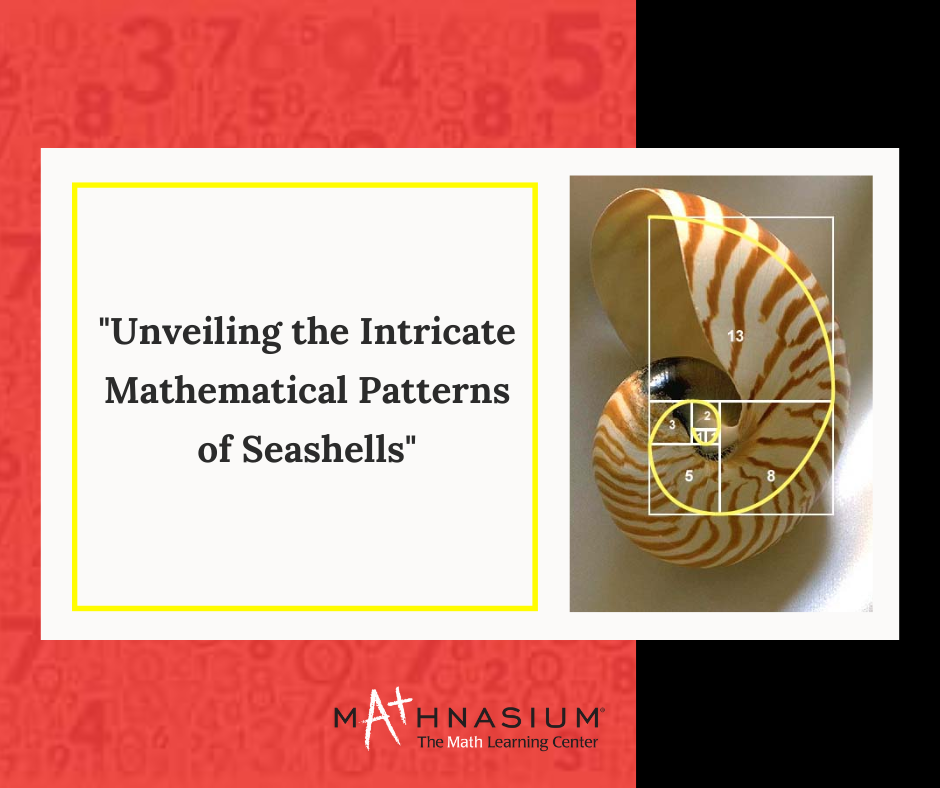Happy Thanksgiving
Our most important customer at Mathnasium, our students, took the time in the spirit of Thanksgiving to write THANK YOU notes to some of our instructors. We say THANK YOU too, we truly appreciate you...

Seashells have captivated humanity for centuries with their mesmerizing beauty and intricate designs. Their diverse shapes, colors, and patterns have inspired countless artists, scientists, and mathematicians throughout history. As we delve into the realm of seashells, we discover an extraordinary world where nature's mathematical prowess manifests itself in fascinating patterns. From the spiraling Fibonacci sequence to the elegant logarithmic spirals, let's explore the mathematical wonders hidden within seashells.
Fibonacci Sequence: One of the most prominent mathematical patterns found in seashells is the Fibonacci sequence. This sequence is a series of numbers where each number is the sum of the two preceding ones (e.g., 0, 1, 1, 2, 3, 5, 8, 13, ...). Seashells such as the nautilus display a spiral pattern that adheres closely to the Fibonacci sequence. Each chamber of the nautilus shell grows in size following the Fibonacci numbers, creating a visually striking spiral that is both aesthetically pleasing and mathematically intriguing.
Logarithmic Spirals: Many seashells also exhibit logarithmic spirals, a type of spiral where the distance between successive turns remains constant. These spirals are seen in shells like the conch and the sundial shell. The logarithmic spiral is a remarkable phenomenon that is found abundantly in nature, reflecting the elegance of mathematical principles present in the natural world.
Archimedean Spirals: In addition to logarithmic spirals, seashells occasionally display Archimedean spirals. These spirals differ from logarithmic ones as the distance between successive turns increases at a constant rate. The scallop shell is a classic example of an Archimedean spiral, reflecting another intriguing mathematical pattern found in seashells.
Voronoi Patterns: Voronoi patterns are geometrical arrangements seen in various natural structures, including seashells. These patterns emerge when a set of points divides an area into regions based on the nearest point to each part. In seashells, Voronoi patterns are often observed on the outer surface, forming distinct polygonal shapes that create a stunning mosaic.
Tessellations: Seashells also showcase mesmerizing tessellations, which are repeating patterns of shapes that fit together without any gaps or overlaps. Tessellations found in shells can be hexagonal, pentagonal, or other regular polygons. Such regularity in their arrangement is a testament to the underlying mathematical precision that governs their formation.
Symmetry: Symmetry is a fundamental concept in mathematics, and it is prevalent in the world of seashells. Many shells exhibit bilateral symmetry, where one half of the shell is a mirror image of the other half. Additionally, rotational symmetry can be observed in certain shells, where the shell's appearance remains unchanged after a specific rotation.
The enchanting allure of seashells lies not only in their external beauty but also in the mathematical wonders they behold. From the spiraling Fibonacci sequence to the intricate logarithmic and Archimedean spirals, these natural marvels provide a captivating glimpse into the mathematical patterns that underpin our universe. Exploring the mathematics of seashells reminds us of the interconnectedness of art, science, and nature, inspiring us to appreciate the exquisite harmony and precision found in the natural world. As we continue to uncover the secrets hidden within seashells, we gain a deeper appreciation for the elegance and beauty that mathematics bestows upon our environment. So, the next time you pick up a seashell on a sandy shore, take a moment to marvel at the mathematical masterpiece that nature has created before you.
